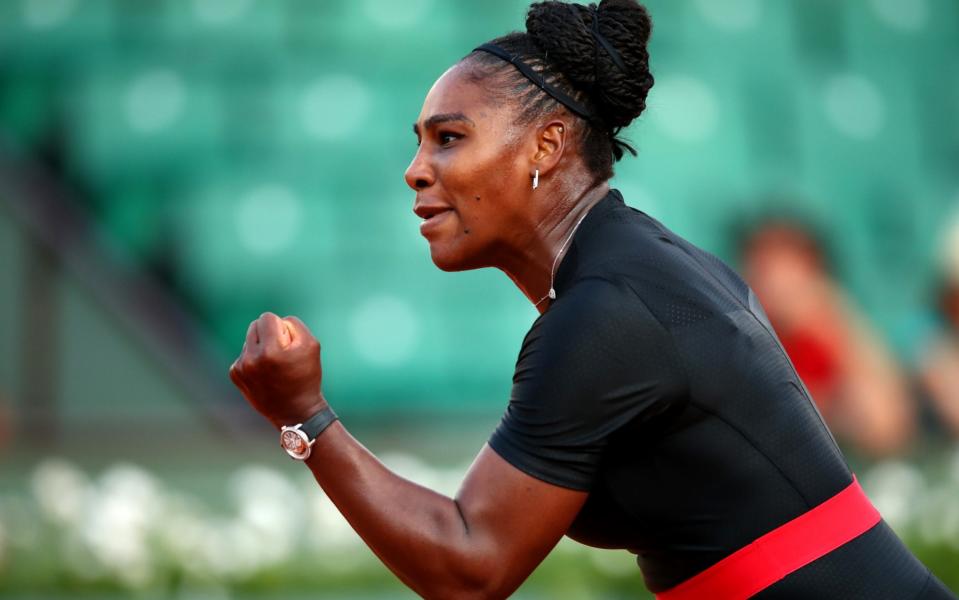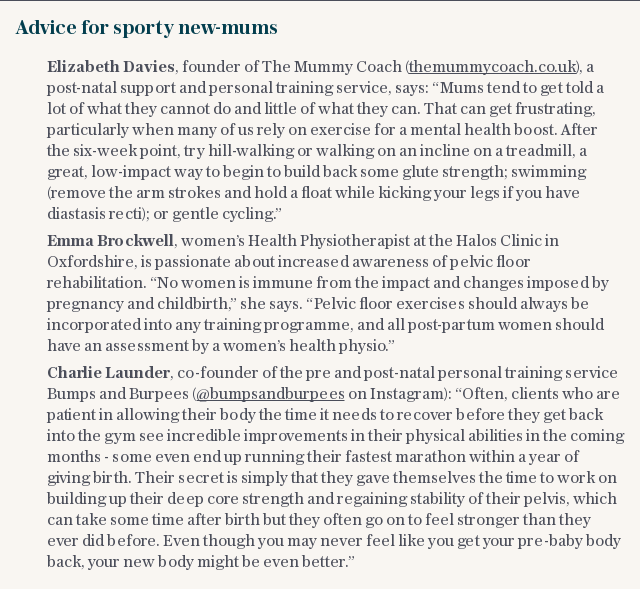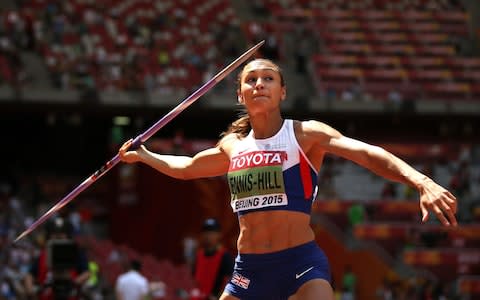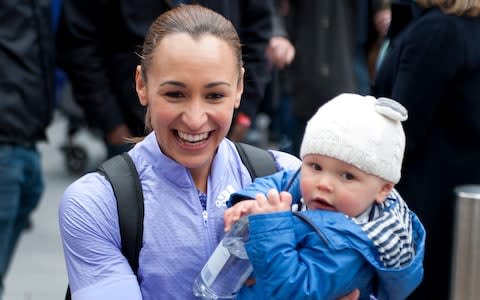How Serena Williams and other elite sportswomen are smashing the 'maternity penalty'

Dressed in skin-tight black bodysuit and red waistband, with biceps bulging and brow furrowed in determination, Serena Williams only needed a cape to perfect her Wonder Woman look. On the first day of the French Open earlier this month, not only was she on winning form, she was also back on court a mere eight months after giving birth.
The 36-year-old, who revealed her daughter Alexis Olympia’s traumatic birth and resulting complications nearly killed the tennis star and left her bed-bound for six weeks, posted a defiant picture on her Instagram page (liked by nearly 700,000 people), with the caption: “For all the moms out there who had a tough recovery from pregnancy — here you go. If I can do it, so can you.”
We’re not all racing round on the tennis court in a bid for Grand Slam glory less than a year after having a baby, but Williams is part of a new wave of female athletes who are not just returning to their field after motherhood, but coming back stronger, faster, and more determined.
“Having a baby does not mean the end of an athlete’s career,” says Mark Buckingham, a physiotherapist who treats elite athletes at his Northamptonshire-based practice Witty, Pask & Buckingham. With one caveat: “As long as proper care is taken at the right time.”
While many brand new mums struggle to build up the energy to leave the house for a coffee date (I did), elite sportswomen who have babies are, of course, in a different league. Paula Radcliffe, who admitted that “the athlete in me doesn’t like being pregnant”, won the 2007 New York Marathon 10 months after her daughter Isla was born.

Long-distance champion Jo Pavey won European 10,000m gold less than a year after having her second child in 2013. Meanwhile, Jessica Ennis-Hill won gold at the World Athletics Championships in Beijing in 2015, when her little boy Reggie was 13 months old.
Now Williams – who begins her Wimbledon comeback today as the number 25 seed – and four-time Olympic champion cyclist Laura Kenny (née Trott), who was back on her saddle six weeks after having baby Albert last August, are following suit.
Toni Minichiello (toniminichiello.com) – who is Ennis-Hill’s former coach (she retired in 2016 and has since had a second baby, Olivia) – knows all about the motivation that elite sportswomen who are also new mums develop.
“Jess wanted to come back and win an Olympic medal, something that she could share with Reggie,” he says. “You have to remember that a sports person’s entire identity is wrapped up with their performance. But having children changes anyone’s motivations. It can serve to reinvigorate you.”

It’s not just a mental boost – certain physiological aspects of pregnancy can even help athletes.
One is the amount of blood pumping around the body, serving oxygen to the muscles. “Due to the needs of the foetus, blood volume and red blood cell mass increases during pregnancy,” Buckingham explains.
“Cardiac output increases by between 20 and 50 per cent from week five, and all four chambers of the heart become enlarged, particularly the left ventricle, which can be as much as 50 per cent bigger in the third trimester. Left ventricular hypertrophy (muscle growth) can be seen as a result in training in high-level athletes, particularly in endurance sports such as running and swimming, as well as tennis players.”
It’s not permanent – effects begin to reverse from two weeks post-partum and can take up to six months to get back to normal – but Ennis-Hill found that it gave her an advantage when she needed it during training: “If I was doing 800m-related sessions, I could just do them. I could go on a bit longer and it felt easier.”
Despite the sleepless nights and seemingly endless feeding/nappy-changing routine, being a mother can also increase athletes focus, Buckingham says.
“Top-level athletes have to be driven and focused, to the point of being obsessed, with their bodies, their training and their performance, which can often lead to overtraining and, thus, injuries. Naturally, looking after a baby is demanding and time-consuming, and so training has to become more focused on what is absolutely necessary. It gives more time for rest and recovery.”
Minichiello agrees: “To be a top sports person, you have to be incredibly selfish; to be a mum is the other end of the spectrum. We used to train five to six hours a day, but after Reggie was born, we lost 25 per cent training time because Jess was adamant that she needed to leave at midday to get him from nursery.”
In fact, unlike Radcliffe, who was out running 12 days after giving birth (she’s since admitted it was “too soon”), Ennis-Hill took three months off entirely after Reggie was born. When she was ready to start again, Minichiello says they were cautious.
“The body releases a hormone called relaxin during pregnancy [to relax the muscles and tendons needed for childbirth], and it can stay in the body for up to a year. So we were careful and didn’t let her lift very heavy weights. She also had diastasis recti [ab separation] from childbirth, so we had to wait for them to knit back together. It was all very gentle.”

Buckingham agrees this is the best approach, despite the fact that athletes are programmed to push themselves hard: “I have had patients over the years who have tried to push themselves to return to sport before their body was ready and have suffered either immediate or longer term injury as a result,” he says. “The effects of the hormones on the skeleton cannot be underestimated, and too much too soon on a weakened and poorly controlled skeleton will cause injury.”
Emma Brockwell, a specialist women’s health physiotherapist at Halos Clinic in Oxfordshire, says that elites such as Ennis-Hill and Williams would probably (or hopefully) be seeing specialist women’s health physio to help rebuild their pelvic floors after pregnancy, especially if they compete in high-impact sports such as tennis, and don’t want any unintended accidents on court. “The implications of not addressing these changes and trauma can cause numerous problems including urinary incontinence,” she says.
Williams’ return to competitive tennis this summer has been meticulously planned. She pulled out of the Australian Open in January, saying: “Although I am super close, I’m not where I want to be.” Which was, simply, the best.
Minichiello says her “attitude is smart. She’s someone who’s been playing tennis a long time. She has a unique ability to step back and reflect objectively. She understand where her body is at, and understands that she’s on a journey.”

